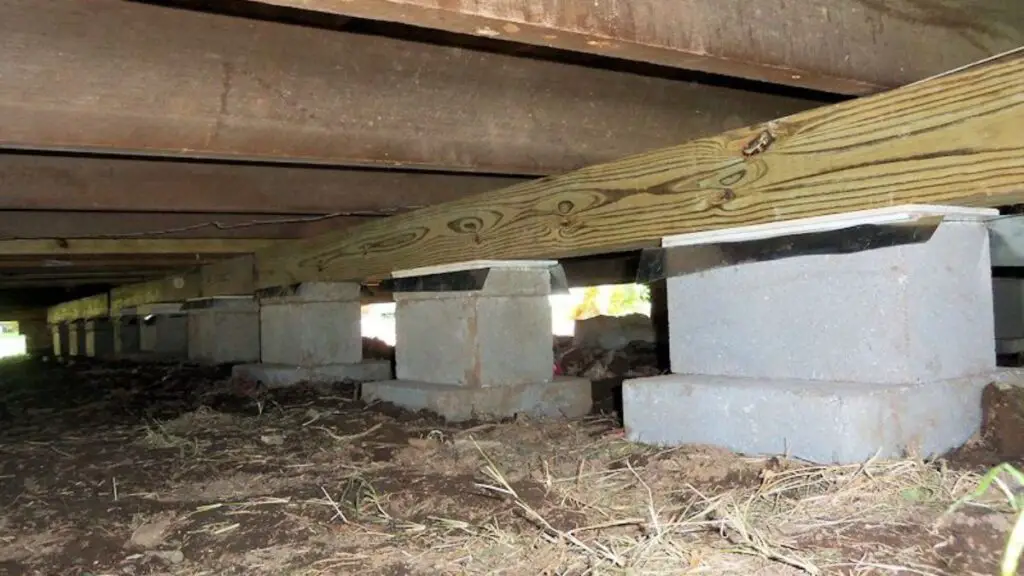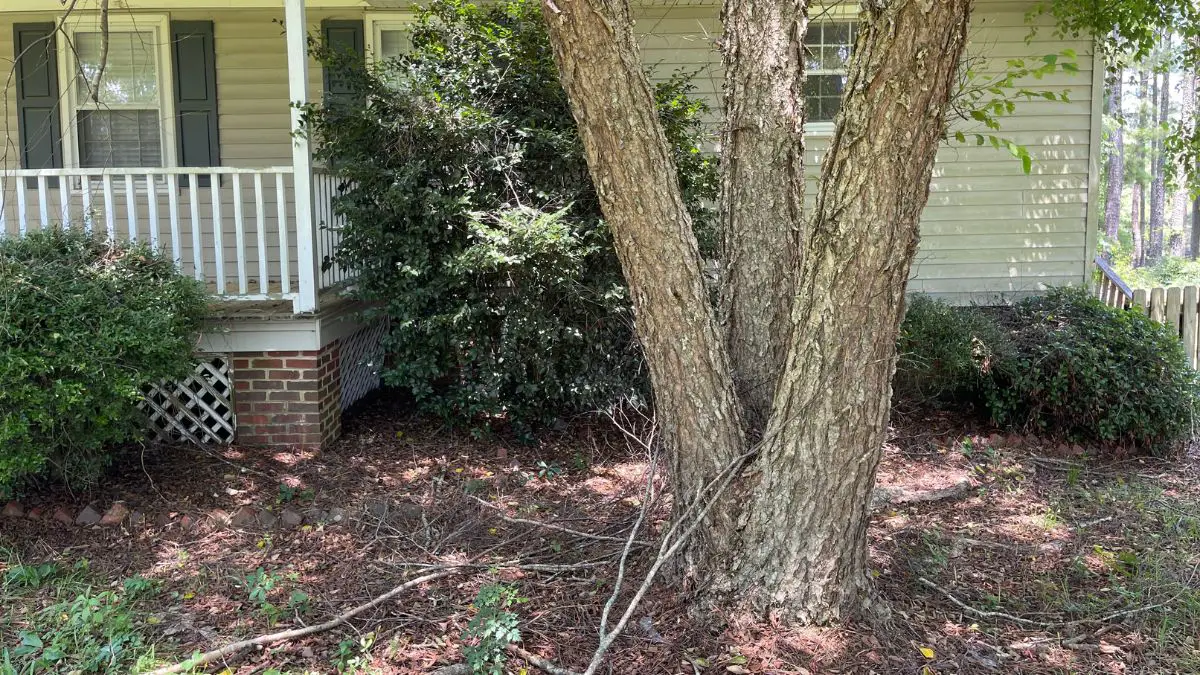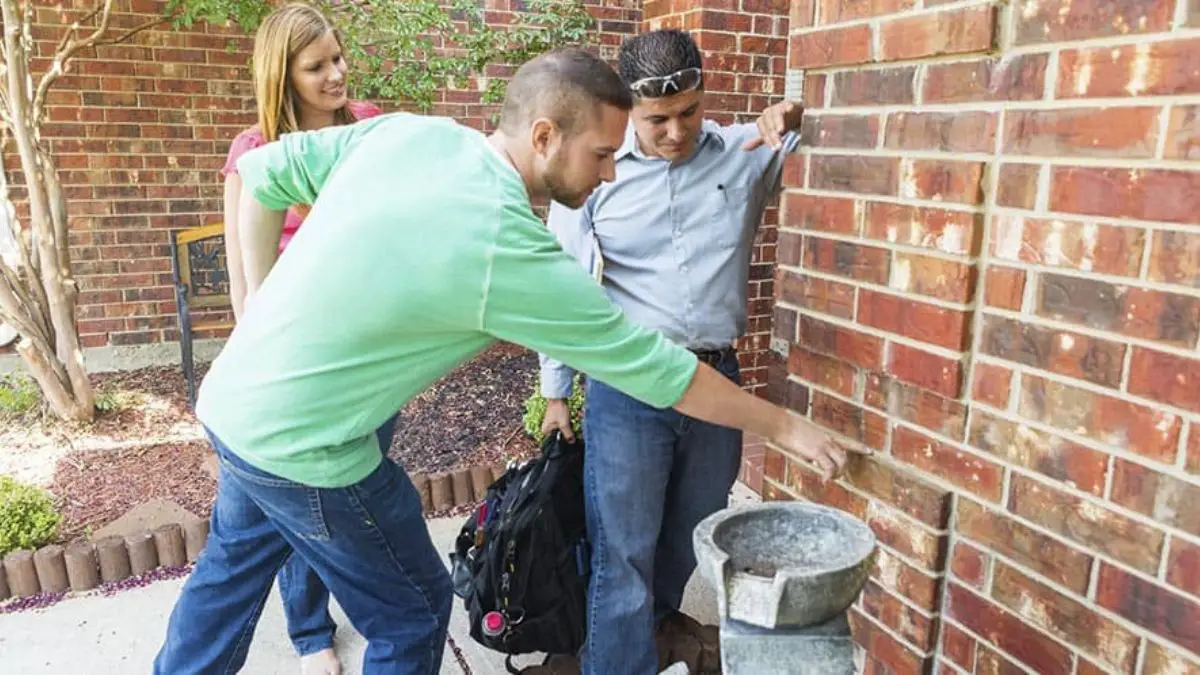If you’re a homeowner with a pier and beam foundation, it’s important to understand how to identify and repair any damage that may occur, utilizing effective “Pier and Beam Foundation Repair Methods”. These foundations are popular for their flexibility and durability, but even the best-built foundation can experience wear and tear over time.
When considering pier and beam foundation repair, you have several methods, including shoring, re-shimming, screw jacks, wood beam replacement, steel beams, helical piles, and concrete piers. Each caters to different needs and the severity of the damage. Costs can range from $1,200 to $30,000, with financing options often available.
By understanding the importance of maintaining a healthy foundation, you can prevent further damage and ensure the safety of your home and family. Whether you’re experiencing cracking, sagging, or moisture problems, there’s a solution that can help restore your foundation to its former strength.
So, let’s dive in and explore the world of pier and beam foundation repair, including costs, different methods, and maintenance tips to keep your foundation in excellent shape for years to come.

Different Types of Pier and Beam Foundation Repair Methods
Shoring
Shoring is a temporary fix that involves using wooden or steel beams to support the foundation until permanent repairs can be made. This method is ideal for emergencies where quick action is needed to prevent further damage. The shoring process involves excavating around the foundation to expose the damaged area, installing the support beams, and removing them once permanent repairs have been made.
Re-shimming
Re-shimming is a cost-effective and efficient method to level out a foundation by adjusting the height of support piers. It involves placing shims between the piers and the beam. While it can address minor issues and enhance structural symmetry, it is unsuitable for long-term solutions to major foundation problems.
Screw Jacks
Screw jacks offer a durable solution for moderate to severe foundation problems by installing adjustable steel columns beneath the foundation. These columns can be adjusted over time to ensure stability. They distribute the weight of the house onto deep-driven steel columns, providing extra support. The installation process involves excavation, column placement, and height adjustment.
Wood Beam Replacement
Wood beam replacement is a cost-effective solution for addressing damaged wooden beams in the foundation. The process involves identifying and excavating the damaged areas, jacking up the foundation, and replacing the beams. While effective for wood beam issues, it may not be suitable for other foundation problems.
Steel Beams
Steel beams are durable and long-lasting for supporting a pier and beam foundation. They are ideal for areas with high moisture or termite activity, as they are resistant to rot and insects. The installation process for steel beams involves excavating around the foundation, installing the columns, and connecting them to the existing beams.
Helical Piles
Helical piles are a deep foundation system that addresses issues caused by soil instability or poor drainage. Steel piles are drilled into the ground and attached to the foundation, providing adjustable support. This method is effective for stabilizing settled or shifted foundations.
Concrete Piers
Concrete piers are a permanent and robust solution that involves pouring concrete footings beneath the foundation to support it. This method is ideal for addressing significant foundation damage or instability. The installation process involves excavating around the foundation and creating a hole to pour the concrete footings.
Summary
The article presents seven methods for pier and beam foundation repair: shoring for temporary support, re-shimming for minor adjustments, screw jacks for permanent support, wood beam replacement for damaged beams, steel beams for durable support, helical piles for soil instability, and concrete piers for significant damage. These methods help ensure long-term foundation stability.

Cost of Pier and Beam Foundation Repair
Are you considering pier and beam foundation repair? The cost of such a repair can vary greatly, depending on the severity of the issue. On average, you can expect to pay anywhere from $1,200 to $30,000 for repairs. However, most homeowners spend between $1,000 and $5,000.
The cost of pier and beam foundation repair, which depends on what must be repaired, can involve replacing sills or beams, replumbing and adjusting piers, or installing new concrete piers. Warning Signs, such as cracks or sagging, should prompt consultation with a Foundation Repair Professional. Similar considerations apply to Basement Foundations, where the repairs needed impact the overall project cost.
If you’re worried about the cost of pier and beam foundation repair and potential structural damage being too high for your budget, don’t worry! Many companies offer financing options that make it easier for homeowners to afford these repairs.
It’s important to remember that delaying repairs not only make your home unsafe but also increases the cost of repairs in the long run. So if you suspect any issues with your foundation, it’s best to contact an experienced contractor as soon as possible for an inspection and estimate.
| Repair Method | Estimated Cost (per square foot) |
|---|---|
| Shoring | $5 – $10 |
| Re-shimming | $3 – $7 |
| Screw Jacks | $30 – $60 |
| Wood Beam Replacement | $20 – $30 |
| Steel Beams | $35 – $65 |
| Helical Piles | $90 – $135 |
| Concrete Piers | $120 – $200 |
Summary
Pier and beam foundation repair costs can range from $1,200 to $30,000, with most homeowners spending between $1,000 and $5,000. Costs depend on the type of repair, with financing options often available. Delaying repairs can increase future costs. The cost per square foot varies for different repair methods and depends on factors like damage severity, location, and materials used.
For more in-depth information, you can check the following related article: Pier and Beam Foundation Repair: Signs, Techniques, and Expert Advice
Maintenance Tips for Pier and Beam Foundations
Regular Inspections
Regular inspections, including checking the condition of concrete blocks, are essential to maintaining your pier and beam foundation’s health. Inspect the foundation and its concrete blocks at least once a year or after significant weather events, such as heavy rain or drought, to identify potential problems early on.
Look for signs of damage, such as cracks, sagging floors, moisture stains, and termite infestations. Timely action, with the help of Foundation Repair Contractors, can prevent further damage, save money on repair costs, and extend the lifespan of your foundation.
Don’t hesitate to contact reliable Foundation Repair Companies and consider solutions like Foundation Piers for signs of Foundation Settlement.
Keeping the Area Around the Foundation Clean
Keeping the area around your foundation and floor joists clean is crucial to preventing moisture buildup, mold growth, and decay. Ensure that the area around the foundation and floor joists is free from debris, plants, and other materials that can attract moisture and pests.
Moisture Control
Moisture control is essential for maintaining the health of your pier and beam foundation. Excess moisture can cause the soil beneath your home to expand, leading to foundation problems such as settling, cracking, and upheaval. To prevent moisture buildup, check the drainage around your home and redirect rainwater away from the foundation.
Proper Ventilation
Proper ventilation is vital to regulating moisture levels and reducing the risk of mold growth. Ensure that your slab foundation has adequate ventilation by checking the vents around the foundation. Ensure that they are functioning correctly, free from debris, and not blocked by landscaping or other items.
Summary
By following these maintenance tips, you can help ensure the long-term stability of your pier and beam foundation, prevent further damage, and save money on costly repairs. Regular inspections, proper ventilation, moisture control, and keeping the area around the foundation clean are simple steps that can go a long way in maintaining the health of your foundation.
FAQs About Pier and Beam Foundation Repair
How do you reinforce a pier and beam foundation?
Reinforcing a pier and beam foundation involves a thorough inspection, repairing any existing issues, adding additional piers if necessary, reinforcing beams, addressing moisture problems, and maintaining regular upkeep.
What is the best foundation repair method?
The ideal foundation repair method varies depending on the foundation type and the specific problem. Solutions range from piering and slabjacking to sealing and complete replacement.
Do pier and beam foundations need to be watered?
In regions with expansive clay soils, it is advisable to water the soil around a pier and beam foundation to maintain a consistent moisture level. This helps prevent soil shrinkage and foundation problems caused by soil movement. However, overwatering should be avoided.
What are the best piers for foundation repair?
The selection of the “best” piers for foundation repair depends on factors like the foundation settlement problem, soil type, and structure weight. Steel, helical piers, concrete, and pile piers are commonly used options, while drilled shafts are suitable for commercial construction.
How do I know if my pier and beam foundation needs repair?
Look for signs of damage such as sagging floors, cracks, moisture issues, or termite infestations, specifically related to pier & beam foundation repair. If you notice any of these issues, it’s recommended to get a professional inspection to determine the extent of the damage and identify the appropriate repair method.
Conclusion
Your pier and beam foundation is a crucial component of your home’s stability and safety. By understanding the different repair methods, maintenance tips, and frequently asked questions about pier and beam foundations, you can make informed decisions about maintaining and repairing your home.
Regular inspections, proper ventilation, excessive moisture control, and keeping the area around the foundation clean are simple steps that can go a long way in maintaining the health of your foundation. If you notice any signs of damage, it’s recommended to get a professional inspection to identify the appropriate repair method and prevent further damage.
Repairing your pier and beam foundation, as well as any issues with a concrete slab foundation, can prevent further damage, extend the lifespan of your home, and improve its overall safety and stability. It’s recommended to get a professional inspection and estimate before beginning any repair work to ensure the work is done safely and correctly.
By following these tips and staying informed about Stable Soil, Access To Plumbing, Sill Plates, Concrete Beams, Wood Rot, and Differential Settlement in your pier and beam foundation and crawl space foundation, you can ensure the long-term stability and durability of your home, and enjoy peace of mind for years to come.







